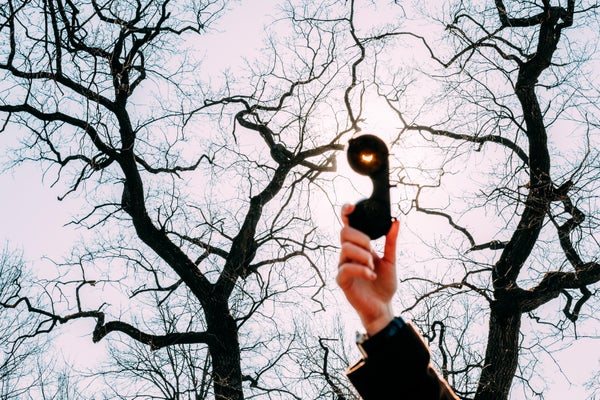Are Your Solar Eclipse Glasses Fake? Here’s How to Check
You’re going to want to guard your eyes from the sun using legitimate protective gear
Ryhor Bruyeu/Alamy Stock Photo
This article is part of a special report on the total solar eclipse that will be visible from parts of the U.S., Mexico and Canada on April 8, 2024.
A day after the American Astronomical Society (AAS) announced that there were no signs of unsafe eclipse glasses or other solar viewers on the market in early March, astronomer and science communicator Rick Fienberg received an alarming call.
Fienberg is project manager of the AAS Solar Eclipse Task Force, which is busy preparing for the total eclipse over North America on April 8. He’s the creator of a list of vetted solar filters and viewers that will protect wearers’ eyes as they watch the moon move in front of the sun. When a solar eclipse last crossed a major swath of the U.S. in 2017, Fienberg and his team spotted some counterfeit glasses entering the marketplace—imitations that distributors claimed were manufactured by vetted companies. Testing at accredited labs indicated that many counterfeits were actually safe to use, however. This led the task force to describe such eclipse glasses as “misleading” but not “dangerous” in a March 11 statement meant to reassure the public.
On supporting science journalism
If you’re enjoying this article, consider supporting our award-winning journalism by subscribing. By purchasing a subscription you are helping to ensure the future of impactful stories about the discoveries and ideas shaping our world today.
But then Fienberg’s phone rang. The caller was “a guy who had bought thousands of eclipse glasses from a distributor who had been on our list at one point,” Fienberg says. “Those glasses were not safe. They were no darker than ordinary sunglasses.” Legitimate eclipse glasses are at least 1,000 times darker than the darkest sunglasses you can buy.
Fienberg
Read the full article here







